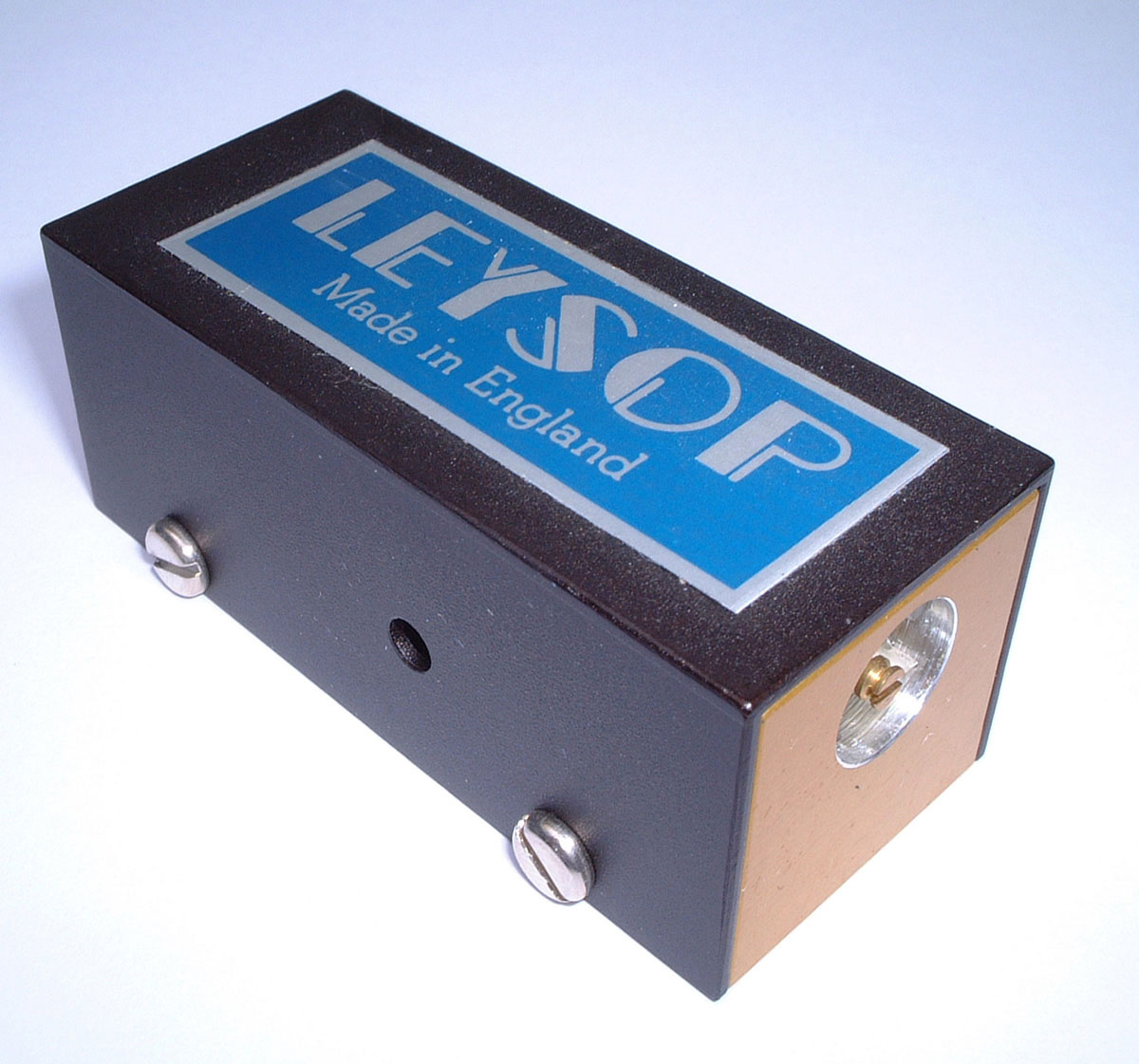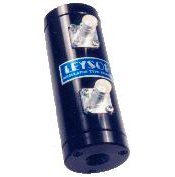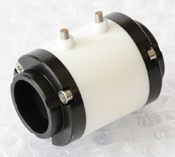Resonant Optical Phase Modulators
Efficient modulators for single frequency applications

Resonant Phase Modulator: PM4-100 (4 MHz to 100 MHz versions available)
By making the electro-optic crystal part of a tuned circuit, relatively low drive voltages can be used to achieve up to π radians of phase modulation. For the range 50 MHz to 100 MHz the enhancement of the voltage which is able to be applied across the crystal as a result is typically around 10 times that of the 50Ω input drive. For lower frequency versions it is often possible to improve this to ~20 times the input voltage.
For the tuned circuit arrangements the drive power required from the source is usually less than one or two watts to achieve a modulation which maximizes the first order sidebad (about 1.8 rad phase shift).
These phase modulators can currently only be supplied without a drive source but they may be driven by most any 50Ω source impedance amplifier..
Typical Performance
| Optical wavelength range |
600 - 1300 nm (Lithium Tantalate) |
| Crystal Configuration |
Brewster cut or ar/ar normal incidence rod |
| Aperture | 2mm |
| RF Drive power | 2 watt maximum for π radians |
| Tuning range of optical head | ± 15% of centre frequency |
| Voltage gain from tuned circuit | > 10 |
| Input impedance of head | ≅ 50 Ω |
| Note: These are typical specifications taken from a phase modulator operating at 70 MHz. | |
Brewster vs straight-cut crystals
We manufacture the modulators both with Brewster cut crystals and also straight-cut crystals (which then are given a suitable AR coating). The choice is mostly determined by practical reasons, the Brewster-cut crystals have lower capacitance and so are easier to resonate with practical value circuit components at the middle to high frequencies although shorter straight-cut crystals are also used. At the lower frequencies longer crystals are practical because of their higher capacitance and fit well with series resonant circuits.
Non-resonant options
Although not listed on this page specifically which is about resonant phase modulators, there are times when it is beneficial to use a non-resonant modulator so as to access a wide bandwidth over which the modulation can be applied, or if one wishes to use pulsed phase modulation such as to encode data into the carrier phase which would not then work with a resonant device which by its nature is narrowband. There are a number of our transverse field modulator designs which may be used as broadband phase modulators and in the sidebar you will see listed the EM200 series modulators and also RTP modulators. To optimize these for phase modulation does require a different relative alignment of the crystals so this must be set during manufacture. In general, many polarization modulators can be used as phase modulators with a 50% reduction in sensitivity compared to an optimized device, but a device constructed for phase modulation applications will have poor thermal stability if used for polarization modulation because it will not have birefringence compensation.Applications
Our original Brewster cut 80MHz modulator was designed for mode-locking of a fs laser design for a laser manufacturer. The extremely low insertion losses across a wide bandwidth and absence of any spurious back reflections made this a very good choice although in recent years other tachniques seem to have overtaken the phase modulator. The principal application is now in phase locking a resonator to a reference atomic transition to frequency stabilise the source, the so-called Pound-Drever-Hall technique.

